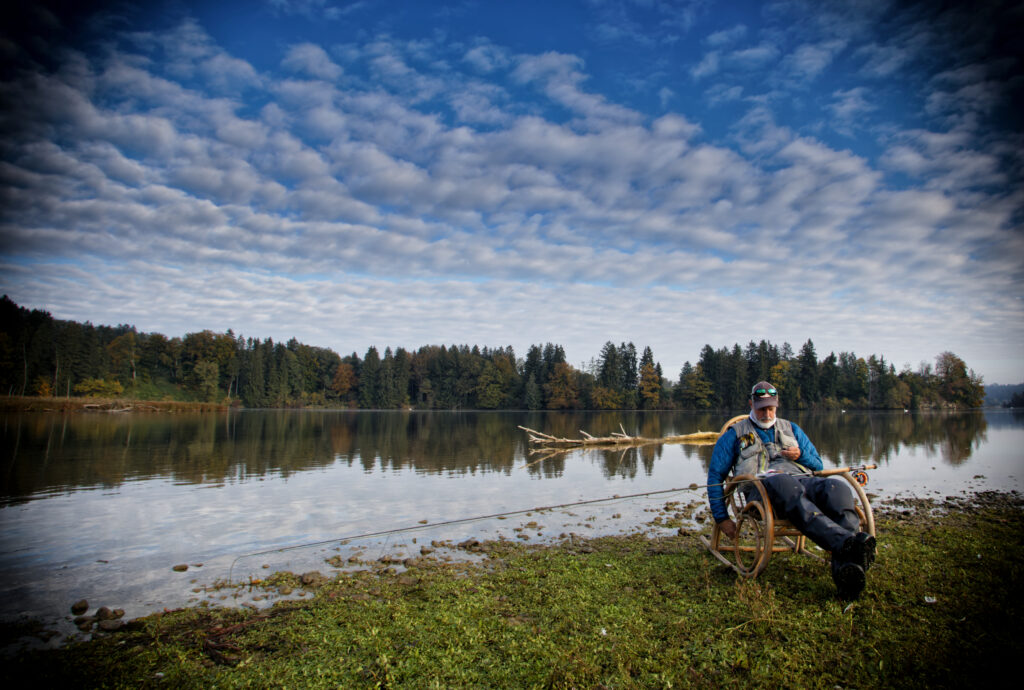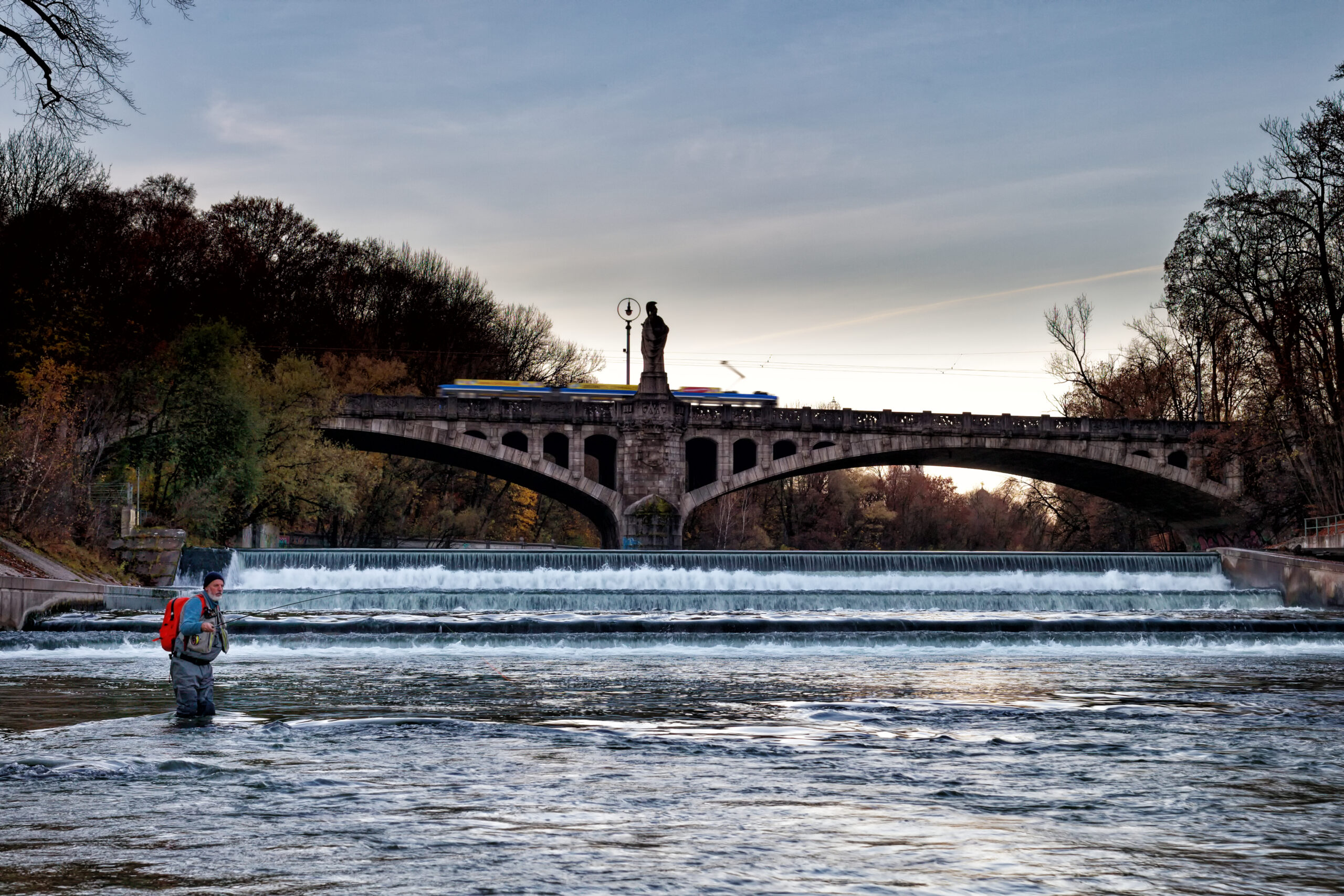Get to know the Bavarian way of swinging flies with Thomas Woelfle, the renowned speymeister of Munich. Also find our how catch-and-release is perceived a bit differently in parts of Europe. Icons, a web series from Swing the Fly, is keeping our promise to keep you informed about how the world swings, and as a bonus, how the world makes dentures.
Tell us about the business you operate in Bavaria. Is it difficult for you to find the time to swing flies?
My business as a managing director of a dental lab actually is very stressful. It is getting tougher each year to keep up a high level of quality and still hold moderate prices. Finding well-trained employees (professionals) is getting tougher also. I am glad to have a good team of people who have worked together for more than 15 years and I have to say…we are good in what we do, making teeth for all kind of people…young and old.
We try to combine the analog and digital world in making teeth. The digital production world is unstoppable, and probably the only way to compensate for the lack of employees who know their job. Good craftsmanship is still appreciated, but the modern world wants more than that now. However, the better you are at analog processes, the better you can realize work in the digital world. I know both worlds and profit a lot from that knowledge. Sometimes I think I belong to a dying breed since dental technicians are getting rare. On the other hand, there is a lot of potential since younger dentists really appreciate and profit from knowledge they get from people who learned their job from head to toe.
I started my apprenticeship as a dental technician because a dedicated fly fisherman who was running a dental laboratory saw me tying flies and hired me directly after that. He also had an extremely good private stretch of a trout river. After work I regularly spent my time there and caught big browns – a smart way to get me into the job I have been doing for a long time now. Meanwhile I spent more time coordinating the dental business and learning from them. I still try to save enough time for fishing, and I think time is more important than money.
I am lucky to have licenses for different rivers in different areas so when there is an open time frame or slot I am often close to a river, and a rod and waders are always ready in the car. Every day I cross the River Isar and I really like the early mornings in spring and summer where I fish from 6 to 8 a.m. before I head to work. So, it is not so difficult for me to find time for my fishing, although I really enjoy days on the river where I have no time pressure, and I have the freedom to come home whenever I like.
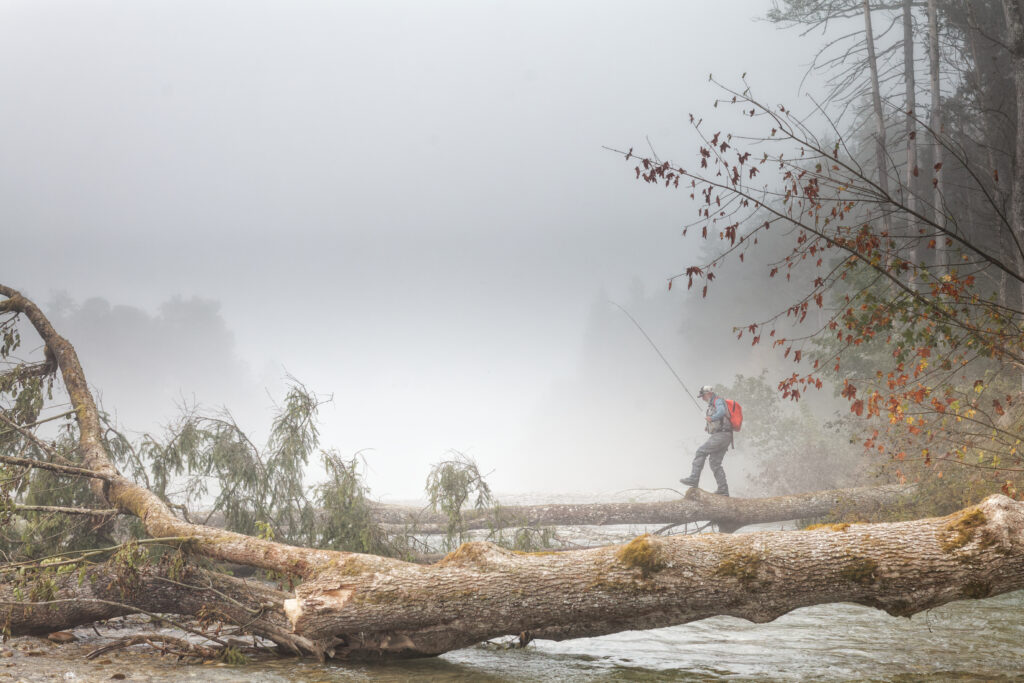
What species do you swing flies for in the rivers around your home?
Prime species are trout. Our rivers need support and so lots of fishing clubs stock the rivers with trout, mainly hatchery rainbows. There are brown trout in our river systems and some also hold wild ones and it can be very rewarding to swing flies for them. But as you know they are by far not as easy to catch as the rainbows. May, June and early July are months where, with a little bit of luck, there are hatches of green drakes and damselflies. In the fall, if you swing a bigger nymph pattern around the hot spots you have a good chance to hook nice fish, when they move more towards spawning grounds. We also have beautiful graylings around here, but not nearly in numbers compared to the 80s and early 90s. A fact we all know. The grayling is a wonderful fish and when I get one accidentally while swinging smaller wet flies I am always happy to still have them around.
What do you like the most about fishing in the urban areas around Munich?
First, the luxury of just a ten-minute drive to be at the water where I can swing my flies for trout. It is a good combination of lifestyle and fishing in the city I love, my city. I grew up there, I am totally Bavarian and always spent time at the River Isar, as a kid, barbecuing, partying with girls and a little bit more. Later on, as a dad with a Kinderwagen, I still enjoyed the river, and last but not least, today as a fisherman who absolutely loves what he does. In summer or on sunny days I have to share it with thousands of people, and instead of a trout a naked human being or dogs might swim around your trout spots.
When my dad was alive, I fished a lot with him downtown. I picked him up, we fished two or three hours and ended up at a small beer garden drinking a lager, all along the River Isar. You can wade the river slowly downstream, and if you like you always can stop at a place where you can get a drink, an aperol spritz (we are close to Italy) or just what I like most… a cold, local lager out of the bottle. Sometimes I just sit at the bank of the river downtown, having a rod ready and just wait until some trout start rising while enjoying something to eat or whatever. There is another bigger urban creek very close to Munich, with a lot of farming around, but as soon as you walk down the hill you disappear and fish in a world of its own. A hidden world. A small little jungle where you can sight fish for trout in crystal clear water. I am always surprised how wild animals find their places in such urban territories – birds like kingfisher and pheasant, foxes, hares, deer, etc. Amazing what you can observe early in the morning, including some big shy browns nymphing for scuds in the shallow water along the edge of weed beds.
When you are fishing on your own, which river do you consider to be your “Home River” (or rivers)?
That is almost impossible to answer. I grew up along the River Isar. My school was downtown, close to the river, so as teenagers my buddies and I always went there to hang out, barbecue or spending first delicate adventures with girls. A lot of personal history beside the world of trout. My mum always was afraid that I would get lost in that world and she always was worried that I might marry a trout or grayling. Well, it was not that bad but more than one relationship failed due to fishing. So, the Isar played and still plays a big part in my history as a fisherman. But it is not the only river. Depending on the time of year, I add the rivers Lech and Ammer to answer this question. On both rivers I have fished for more than 30 years now, had good and bad days, memorable fishing with friends and so on.
Which river that you have never fished before would you most like to try?
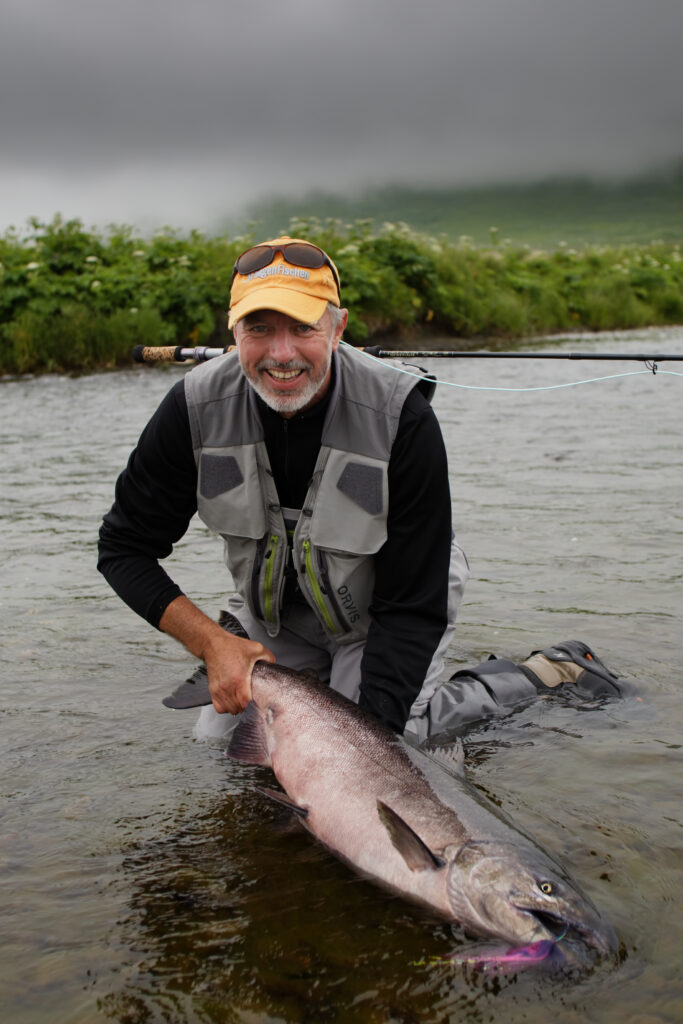
There is still so much out there to explore. At some point there are some private parts of rivers around my home in Bavaria I really like to fish but cannot talk about it. A dream to fish there. To bring it to the point I think it might be the Alta in Norway, the Dean, Babine or Sustut in BC (I’d love to catch a bigger steelhead one day) or some of the Gaspe Rivers in Quebec.
What is your favorite fly?
My favorite fly is a simple pheasant tail. It saved my life as a trout fisherman so many times, especially for selective and cautious fish. I tie it in different colors and usually with a small tungsten bead in the thorax section. I rarely use them in sizes bigger than 16 but it is my all-time favorite. And they work great in a slow swing with a light rod, too.
The Leisenring Lift and induced take are some key words in that kind of presentation. It would be boring to not explore, so I have by far more flies I like and I still spend evenings at the tying table, although I have so many flies in my boxes that there is definitely no need to tie more. But being at the river, solving problems or trying new fly designs is something I don’t want to miss. There are several other patterns I have in mind but that I let you know at another time, since you asked me for one fly.
In the anadromous world I mainly use simpler flies and I think sometimes too much material around the hook kills the play of materials. A good selection of high-quality feathers and other materials is my key to tying a good fly. I am not so reliant on a special fly for anadromous fish as I would be for a fish that actually feeds. I usually pick flies adjusted to water temperature, water color, and level. The less fish we catch the more time we spend in equipment and flies, one of my buddies says. At least that keeps the industry alive.
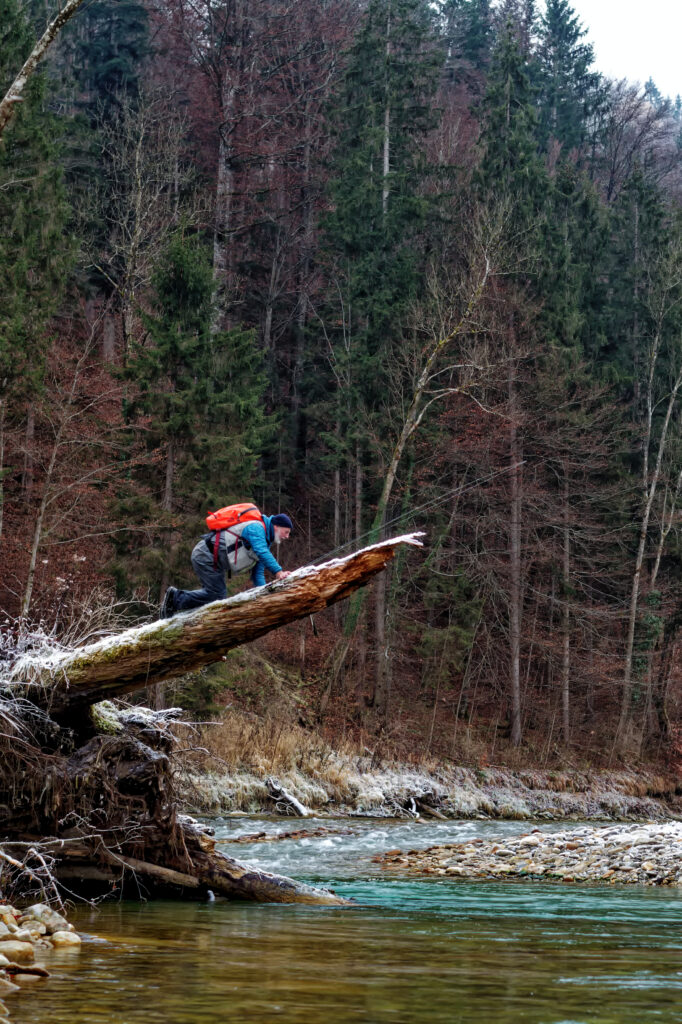
What is your favorite two-hand rod, and what line do you most like to use with it?
My favorite rod is a bamboo rod from Bob Clay, a 6/7 weight, 11 feet long. OK, that is not a rod for the pheasant tail, but I told you that the question for one favorite fly is almost too hard to answer. With this rod I fish all my trout intruders, bigger wet flies, bigger streamers, and the Daydreamer. I combine it with a 3 1/2 Sarracione reel and a Scientific Angler full Skagit line in 420 grains. Some lighter sinking tips, 8-10 feet long, make it a great outfit. Since I have to taper it, it also slows me down and usually those extra minutes help to start the day without hurry and pressure. We have slow food…why not slow fishing? I am not the greatest caster, and I’ll probably get a lesson when I visit Zack in Montana one day and learn from him, but I enjoy every minute with this outfit. Maybe that is also the reason why I got the big hucho hucho with it. A little bit of zen belongs in fishing, believing and joy in what you do, too.
What is your favorite memory from your times on the water?
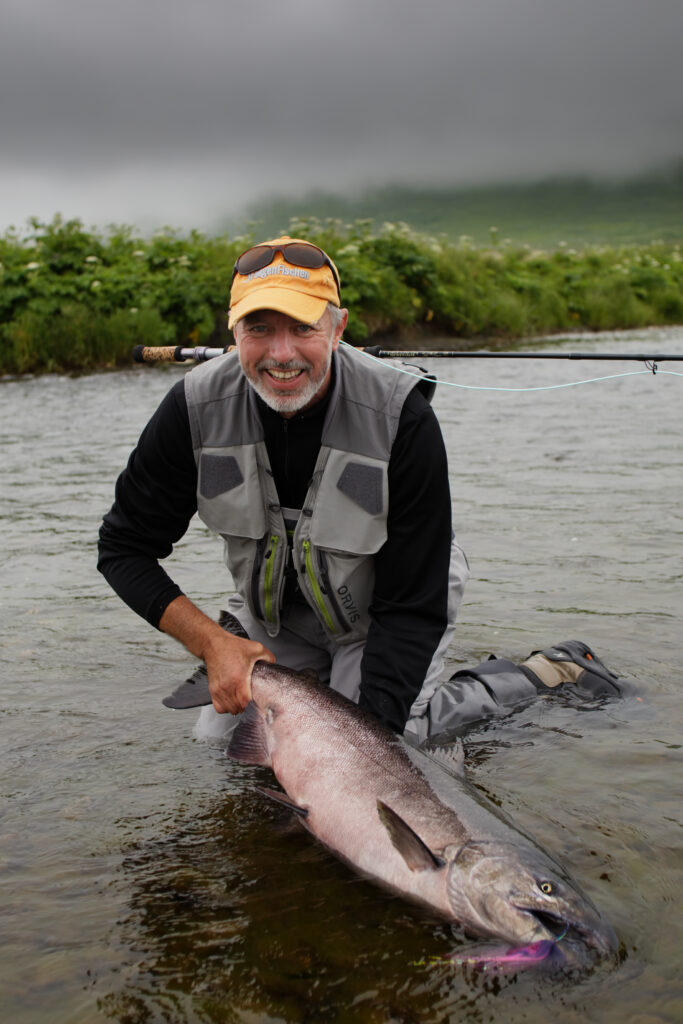
That I definitely cannot reduce to one memory. Of course, there are some big salmon battles on the river where I had to run hundreds of meters along the shore to follow them, or cross the river, a little bit of swimming in between. Landing some hucho huchos when I spent two or three winters without a bite. A day at the Yellowstone Park in 1987 when I crossed the river to the other side and caught one cutthroat after the other (while other fisherman not as brave as I was, suffered on the shore and watched me and my bended rod). The drawback was a herd of buffalos decided to cross the river around the place I fished. I had to wait until the herd was on the other side and I had to cross the river back to the car in darkness. I can say the steak dinner that night tasted great.
Memories with good friends involved are primarily in my head. A trip with my dad in 1990 to Montana where he caught beautiful trout while I was landing them for him all the time, my days at his beloved rivers at home, the smile he had on his face when I was guiding him in his last years gives me lot of very good vibes. Also, a trip in 1991 with my longtime friend Bruce where we traveled five weeks through Montana and covered I don’t know how many hatches. I think we only fished with dry flies during that time. I spent a few days in the tent at Second Meadow on Slough Creek, fished Tricos on the Missouri and the Bighorn, and the outstanding spinner falls at Yellowstone. Life was easy during that time and all we needed was a fly rod in our hands and a place to sleep. Some food, too.
I also remember some evenings at Polly’s Place when I tied some special Trico Parachutes on wet fly hooks for the big browns on the Bighorn while Bruce just assisted with a little flashlight to have light at all. And of course, the following mornings with so many feeding fish on the surface…and we had the perfect fly ready.
There is so much more to tell or bother you with, like my first day at the Ponoi in Russia in 1993 sitting at a small hill, smoking a cigarette with a buddy and just enjoying daylight at 1 o’clock in the morning, the northern lights in northern Quebec in the middle of nowhere, the encounter with polar bears very close, the brown bears in Alaska, the jaguar in the Amazon…all together I think that I thank fishing for so many memories of wildlife. What a bonus!
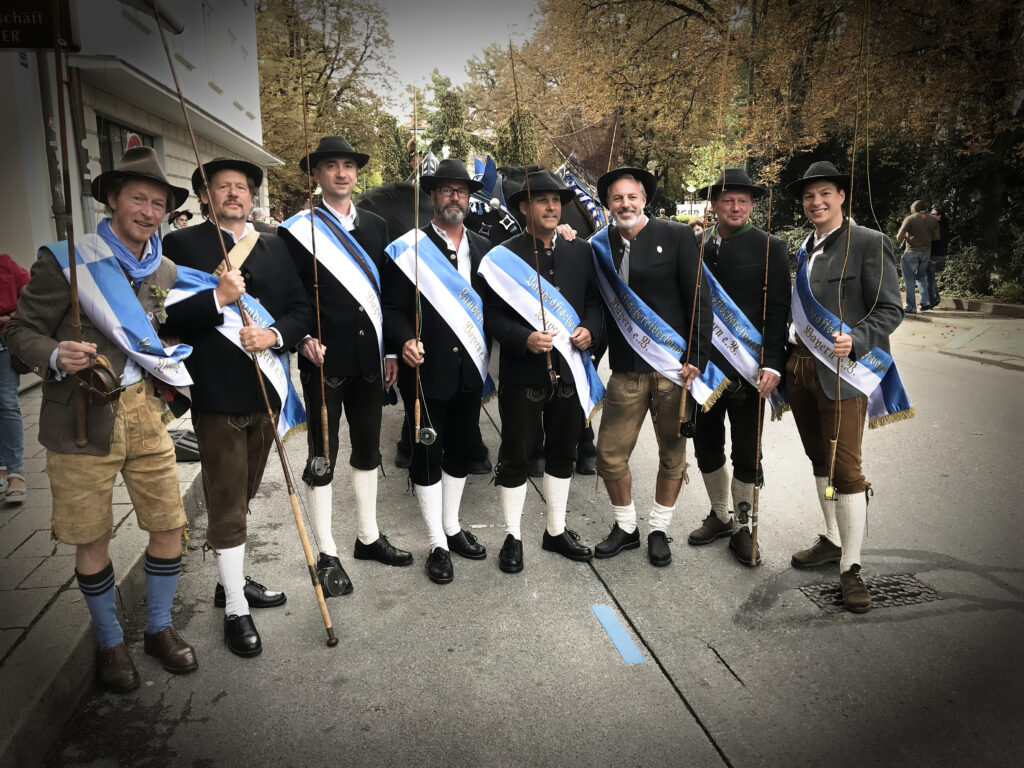
The greatest bonus though is sharing that with good friends. I remember lots of great evenings in our fishing hut with countless hangovers the next day. One not so nice memory still exists…it was a car crash in Mexico a long time ago. A friend and I were driving back from Belize to Mexico. We both landed in the mangroves with the car, an old VW beetle, totally crashed and both of us without any injury except countless mosquito bites. I tell you by experience, the cortisone ointment I bought at Miami airport and the feeling of cure I will always remember. Also the flight back to Munich when I was sitting beside a Danish model. She was so pretty and cute and yes…even listened to my story…and I didn’t ask for her phone number in Munich…oh man, how stupid I was….
What is Germany doing to save wild fish?
Well, Germany is based on federalism so in general I mainly can speak for Bavaria. Here a lot of rivers or parts of them are managed by clubs and you have to be a club member to actually fish those sections. A lot of clubs really care about their rivers. The club Die Isarfischer (where I have been a member for 30 years or so) try to keep the river clean. We have “Rama Damas” twice a year where young and old come together and pick up all the trash along the river. They also are part of the renaturation programs of the river, a modern way to give the river back it’s more or less original flow so that fish can move and the river can spread. On other rivers fish ladders were built or small dams (weirs) were replaced with huge rocks to let the river flow free again – good protection for high water and bigger floods.
There are lots of projects running including taking out school classes to teach them life along and in the river, starting with knowledge of aquatic insects and all the life around it just to sensitize how important a healthy river is. Germany is a small country with lots of people so there is always a conflict between different conservation organizations. As fisherman it hurts that most of the time the fish is the least important concern and a lot of engagement is needed to convince people that fish also have the right to live and are not only food for birds and otters. Meanwhile we have a solid otter problem in Bavaria and Austria, beside all the cormorant and other predators. There must be a middle way so that a whole system can exist but I am afraid that the fisherman have no chance against the bird and otter lobby.
I am happy that there are still many fishermen, no matter if they fish with lures or flies, and still keep up their fight (why a fight at all) to save our native fish like grayling or brown trout. The fishermen seem to have a bad reputation among all the nature conservation organizations, or is it just their plan in the press and media? There are also lots of fisherman, especially in the clubs, who try hard to show the other side, too. Beside this fight at the table there is still a lot of saving trout out there at the river like stocking small trout in the tributaries, or WV Boxes just to keep up the hope that some fish make it to a size where they can spawn in natural habitat.
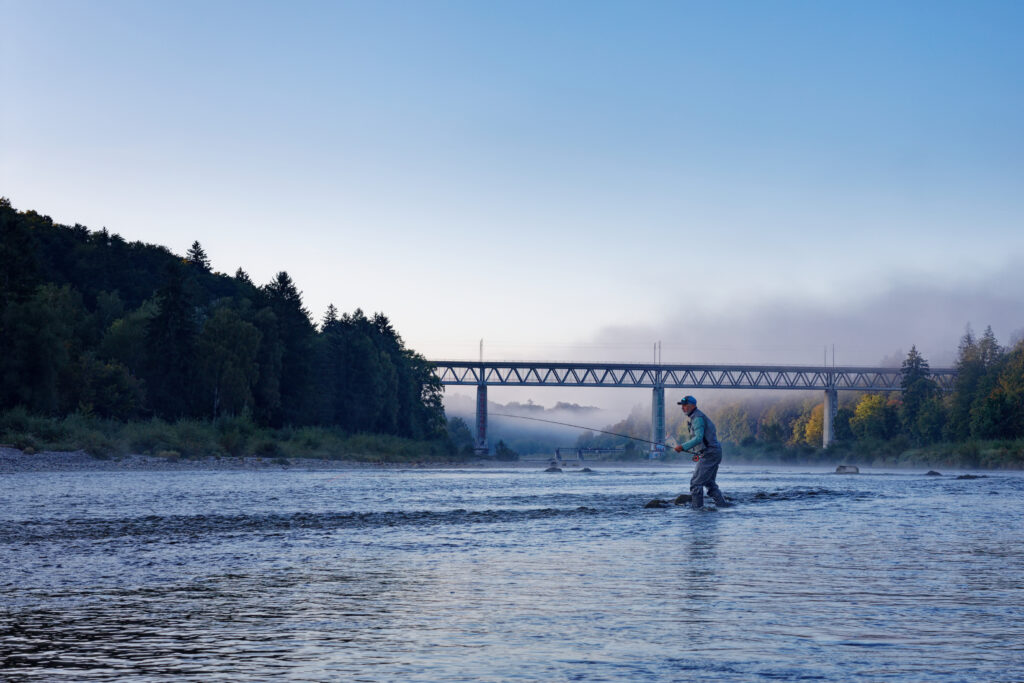
Due to all the passionate work of fishermen you can watch big huchos spawning in downtown Munich. A lot of fishermen think that in Germany catch and release is strictly forbidden. That is only half the truth and a lot of misunderstanding comes with it, even by so-called well informed fishermen. Due to the federalism, every state has different approaches to leave the door open so that fishermen can release fish legally. Here in Bavaria we protect brown trout or hucho hucho with a longer closed season or bigger size limits. Grayling are, in most of the clubs I fish, protected year-round and if you catch a native fish where you think it is important for reproduction, you of course can release it. I know that might sound strange, but with all the conflicts in our small country, the so-called nature protectors don’t like and accept the thinking of just catching a fish for fun. Weird if you are a fish along the border. If you get caught from the German side you have to be killed and if you get caught on the Dutch side you have to be released. It is a dilemma.
I can understand the point of view that a fish is not a toy to play with. That will be an endless discussion in Germany… thank God only here. This is a typical German issue and social media did the rest to heat up this discussion. Guys showing one fish after another – holding them up and releasing them – fish porn at its finest. This was more a very selfish move and anything but clever. The perfect platform for green politicians and organizations to put a big question mark on catch and release here in Germany. To find a way out there I think that fishermen also have to show the public that they are able to act with personal responsibility toward nature and fish and that includes both worlds – harvesting and catch-and-release. If we accept and learn to understand each other there is still a chance to find the golden middle way for all of us, in a civilized world like ours a quite hard thing to do.
What are your plans for the next five years?
Actually, pretty easy and short to answer. Fish as much as I can. One project I have in mind is to spend a week at one my favorite rivers at home. Do it and consider it like a trip to Canada or whatever. I never fished my rivers like I do while traveling. I think that will be an exciting adventure and I might experience some nice surprises. Home sweet home…I know I am heavily Bavarian….
